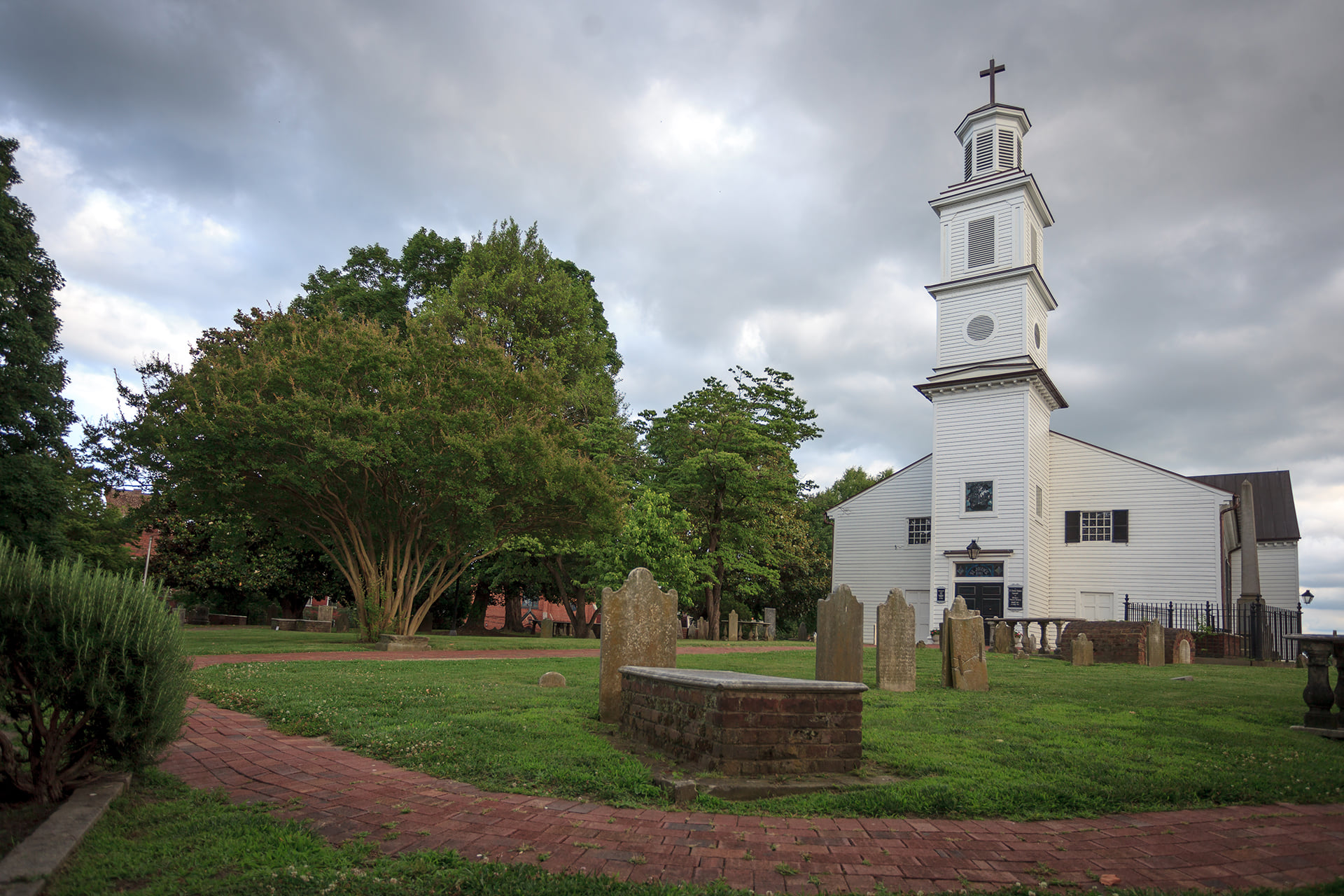“At a Vestry [meeting] held October the twenty Eight, in the Year of Our Lord One Thousand Seven Hundred and Thirty, at Curles Church…”
So begins the first entry in the oldest surviving volume from the Henrico Parish vestry records. That entry describes the meeting of six of the parish’s wealthiest leaders with their minister James Keith. The group set the parish’s budget in pounds of tobacco, paid the church’s officeholders, set alms for the poor and needy, and made arrangements for the upkeep of the church building and grounds.
Such church vestry records are among the earliest and most informative documents from Virginia’s colonial era. Each parish kept regular records of monthly or yearly meetings. The volumes trace changes in local leadership, outline property disputes, offer glimpses into individual lives, and narrate events to reveal the daily contours of their congregations and localities. After the American Revolution, the parishes that survived continued to maintain their vestry records, documenting life in the new nation. And sometimes those old records followed a winding road to rediscovery.
Such is the case for the volumes of vestry records from Henrico Parish, the mother parish for what became known as Richmond’s St. John’s Church, which date from 1730. A key passage in those records was recorded on October 13, 1740, when the vestry voted that a new church be built on “the Hill cal[l]ed Indian Town at Richmond”. It would become the first church in the settlement upon its completion the following year.
Thereafter, St. John’s vestry records trace the winding fortunes of the church during the Revolutionary War, into the antebellum decades, and then through the Civil War. One difficult moment arrived in 1820, when the vestry reacted to what it called the “very unpleasant situation of the Burial ground” surrounding the church that it shared with the city. The vestry called for a new cemetery elsewhere, since its ground was “completely filled with remains, insomuch as a grave cannot be prepared without exhumating the bones of those that have been previously deposited thereby subjecting the officers of said Church to a state of constant and painfull embarassment and almost daily outraging the feelings of our Citizens.”
After the Civil War, the vestry reckoned with wartime losses and Confederate defeat. In its first entry after the Confederate surrender, at a meeting held in August 1865, the vestry worried over its finances and expressed its hope that “no one will hesitate to retain his accustomed pew in the Church because of his inability to pay the whole or any portion of the rent and that all will continue to attend the Church and occupy their pews until a better state of things exists among us.”
Since 1966, these records from Henrico Parish have been available to researchers at the Virginia Historical Society, where they were sent for safe keeping. Upon their transfer, John Melville Jennings, director of the historical society, told the church vestry that those materials “are exceedingly important to the whole fraternity of historical scholarship,” indeed “irreplaceable and priceless.” At that time, the historical society commissioned the Library of Virginia to produce a microfilm copy of the first four volumes, covering 1730-1773, 1785-1887, 1807-1817, and 1887-1900, and delivered that microfilmed copy to the University of Virginia Library. Researchers made special trips to see them at either the Virginia Historical Society (now the Virginia Museum of History and Culture) or the University of Virginia Library.
But now, with the aid of new technologies, the records are available to the wider world. Recently, the vestry of St. John’s Church and volunteers with the St. John’s Church Foundation worked with the University of Virginia Library to donate a digital copy of the microfilm back to the Library of Virginia, where it can be accessed here. The Library of Virginia has further enhanced access by adding these vestry records to its crowd-sourced transcription program, Making History.
An initial effort to transcribe the 1730-1773 volume has been available since 1904, but the other volumes have never been transcribed. Transcription allows the old records to be electronically searchable in addition to translating the old handwriting scrawl.
It takes a team of people and organizations to make such access possible. Through this initiative of the church and the partner organizations and the volunteers, new generations can learn about the history of the city and the commonwealth. What else will transcribers find inside?
–Dr. Ryan K. Smith, Professor of History at Virginia Commonwealth University
Those interested in joining that transcription program can find more information here: https://www.virginiamemory.com/makinghistory/










